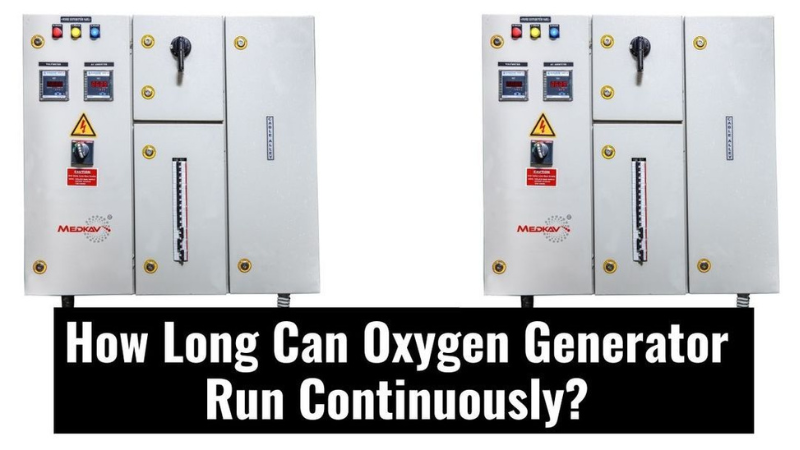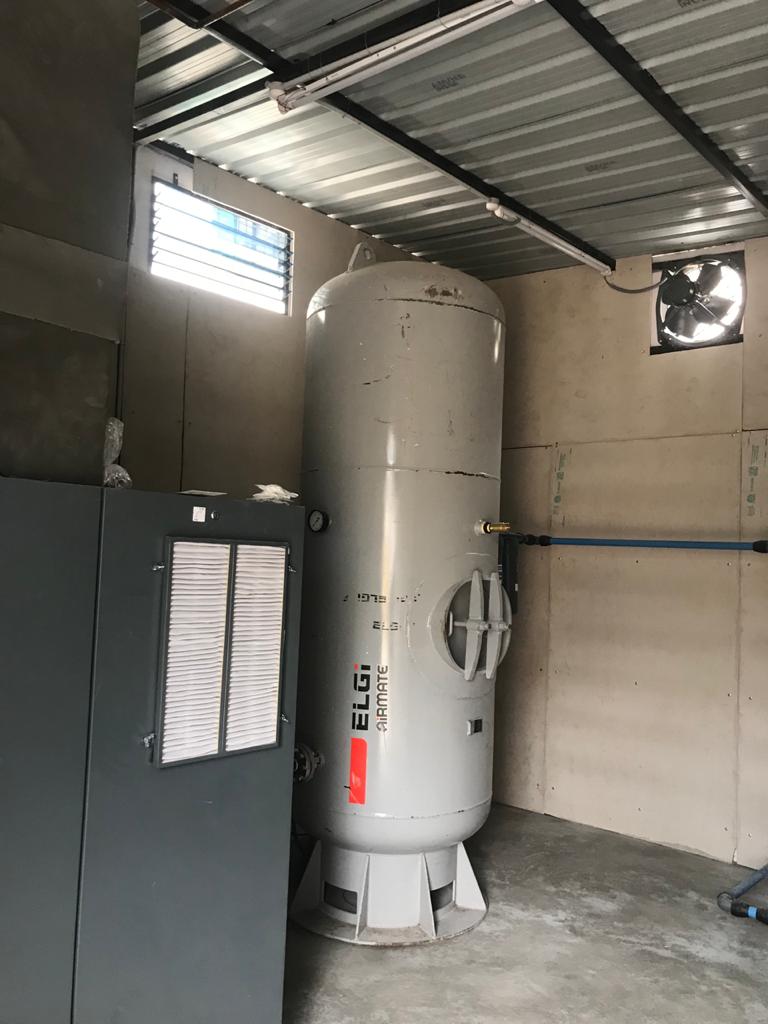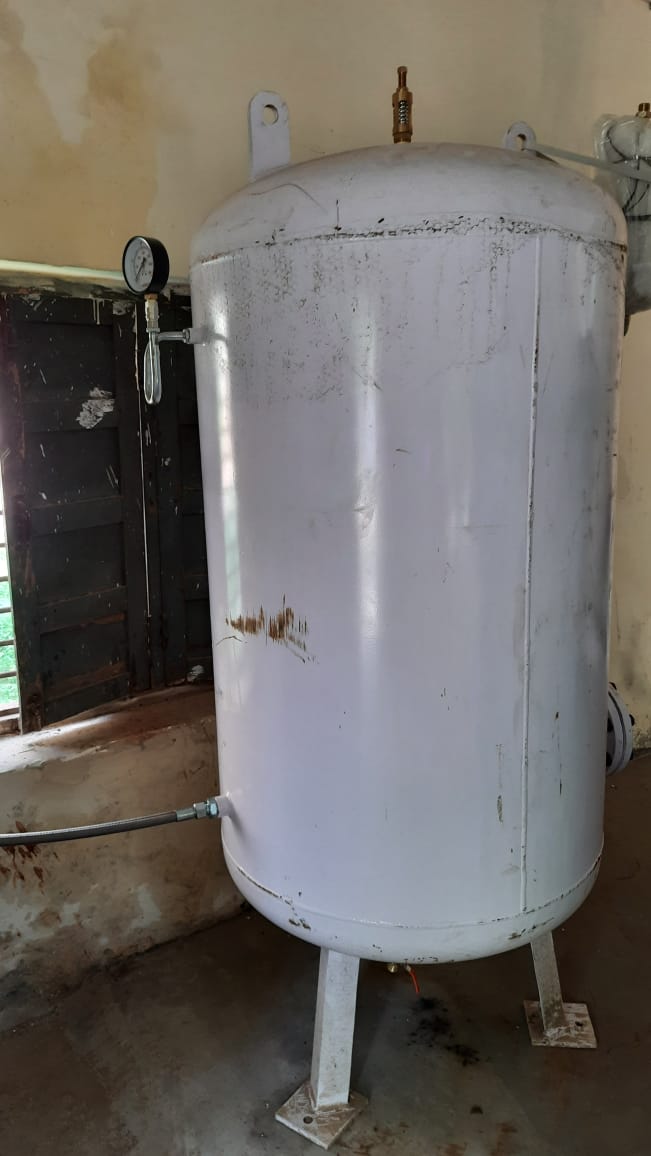
22
July
2022
Generators of oxygen Produce gaseous oxygen on-site and provide a low-cost,
dependable, and safe alternative to cylinders or cryogenic liquid oxygen.
Furthermore, the design is intended to work around the clock, 24 hours a day,
seven days a week. Each generator includes an automatic start/stop feature that
allows it to start and stop in accordance with the amount of energy utilised. An
oxygen generator is a device that separates oxygen from compressed gas via
pressure swing adsorption, a type of selective adsorptive method (PSA).
Two zeolite molecular sieve columns make up the PSA Oxygen Generator. The active
column is filled with compressed gas, which runs up through the zeolite. Oxygen
and other unwanted gases are absorbed when nitrogen passes through. The active
column is then fully pressed. Because the pressure is released, the column
becomes inactive, and it regenerates completely during the depressurization
process. To provide a constant supply of oxygen, each generator is made up of
two columns, one of which is active and the other inert. They trade roles at the
end of each column cycle.
Features That Are Included By Default
- SIEMENS touch panel system in colour
- A molecular sieve protects against moisture.
- Start-up and shutdown are both automated.
- A built-in purity analyzer is featured for continuous monitoring.
- Reliable - built to run indefinitely.
- Built to withstand dynamic pressure.
- Stainless-steel piping with a robust design (AISI316)
- information logging (saved on memory card)
- Audio/visual alarm
- Maintaining the purity of the water
Optional Features Are Available
- GSM modem (remote start/stop, SMS status, and SMS alert notification)
- a flow metre and a totalizer
- An oxygen temperature sensor could be a device that counts the amount of oxygen in the air.
- A temperature sensor is included.
- Modbus TCP/IP connection
- A remote controller is in charge.
MUST-READ ||
Can We Use Oxygen Generator Continuously
We can continue to utilize the oxygen generator because generators are helpful devices that offer wattage during an outage, allowing daily activities and business operations to continue as usual. Generators come in a variety of electrical and physical forms to accommodate a wide range of applications. An electrical generator is a device that converts energy from a source external to voltage. Voltage is not 'produced' by a generator. Rather, it uses the energy it receives to force electric charges in the wires of its windings to move across an external device.
Oxygen cylinders are made using a relatively expensive industrial procedure. For an oxygen cylinder to release oxygen in an extremely controlled manner, a particular valve (regulator) and a flow metre are necessary. It is incredibly wasteful to use oxygen from cylinders without a flow metre, and it is also quite dangerous without a regulator. Not all oxygen cylinders are the same; at least five different types of cylinders are used in different countries. With a regulator, only one type of oxygen cylinder is frequently used.
Can Oxygen Generator Get Heated Up?
A pressure swing adsorption (PSA) process that includes using molecular sieves and heating a pre-adsorption stream before the pre-adsorption stream is fed into the molecular sieves, where the majority of the thermal energy required for said heating is provided by condensation of a post-adsorption stream coming from the molecular sieves via a heat exchange equipment arrangement that includes at least two vertical Shell and Tube type heat exchangers.
Gather detailed information on the type of oxygen cylinder in use from the local oxygen supplier before ordering regulators. A hospital staff with technical competence, such as an anaesthetist, a chest physician, or a suitably qualified hospital technician, could verify this. A global standard for identifying oxygen cylinders specifies that they must be painted white. Regrettably, the rule is frequently broken. Green medical oxygen cylinders are common in the United States, while black with white shoulders are common in Commonwealth countries. Industrial oxygen cylinders should also be clearly labelled, however this isn't often the case.
Oxygen Generator Working Principle
The working idea of a PSA nitrogen generator is that nitrogen gas has a great affinity for adsorbent media such as Zeolite or Granular activated carbon when exposed to high pressures (GAC). Furthermore, depending on the amount of pressure exerted, different gases might be absorbed from a mixture at varying rates. The gas is absorbed when the pressure is reduced.
A conventional PSA generator has two towers: one for absorption and one for regeneration. Air from a compressor enters the absorption tower and comes into contact with the adsorbent, which blocks nitrogen gas while allowing oxygen, carbon dioxide, water molecules, and contaminants to pass. We just reduce the pressure to retrieve the absorbed N2. The adsorption tower is separating the gas at any given time, while the other is in regeneration mode.
MUST-READ ||
How Does An Oxygen Generator Work For Industrial Use?
In the steel manufacturing process, industrial oxygen generators are employed in a variety of methods. Decarburization, or the process of lowering the carbon content of metals while they are still molten, is done in oxygen furnaces. When reheating furnaces, oxygen is also utilised to boost melting rates in the furnaces and to prevent scaling. The extent to which oxygen has replaced iron ore and air in postwar iron and steelmaking has been examined, as well as the primary benefits of oxygen. In open hearth furnaces, oxygen has been employed to boost melting rates during the combustion of fuel gases for heating. Water cooling or strong refractory coatings safeguard oxygen introduction pipes. The partial combustion of town gas with O2 creates a high-temperature reducing environment that keeps reheating furnaces from scaling.
Electric furnaces, open hearth furnaces, converters, and ladles all employ oxygen to oxidise metalloids in the liquid phase. In electric furnaces, oxygen as a means of utilising stainless steel waste is especially appealing in the refinement of high alloy content steels, whilst in open hearths, oxygen provides a rapid way of achieving low carbon content with reduced fuel consumption and hearth wear. In converters, oxygen has been utilised to boost output, and steels of equivalent grade have been produced using oxygen-steam, oxygen-carbon dioxide, and blowing from the top with ore addition.
The metalloid content of open hearth furnace charges is reduced by
oxygen
pretreatment in the ladle. Producer gas can be enhanced in solid fuel combustion to increase melting rates in open hearth furnaces. Oxygen is utilised to boost ferromanganese synthesis while lowering specific fuel usage. Faster melting rates are possible in cupolas because of the presence of oxygen. The conclusion is that oxygen will be used more extensively in the future.
Medkav's Technology
Medkav Technologies is a well-known medical oxygen generator company that offers a wide range of medical oxygen generation, storage, and delivery services. Our goal is to assist you in maximizing the value of your industrial production while remaining within your budgetary limits. Our products and services include cutting-edge oxygen generators that are appropriate for a wide range of business and industrial applications. We help hospitals save money by replacing oxygen cylinders with long-lasting, high-quality oxygen generators. Our products are designed to withstand India's harsh environment, power outages, and pollution issues.
Our collaboration is a journey, not a one-time event, and it is suited to our customers' current and future needs. We offer first-rate service ( USP) We provide timely and attentive service, a team of experts with diversified strengths to support our clients in addressing all sorts of service issues at reasonable pricing, and a devoted team of experts with multiple strengths to assist our clients in resolving various types of service issues.single point of contact account manager to service each client, unlike most other companies (current market alternatives/competitors).
MUST-READ ||



